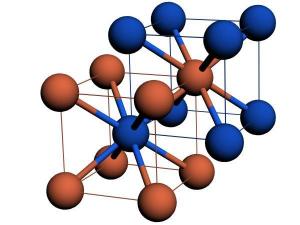 Researchers at at the U.S. Department of Energy’s Brookhaven National Laboratory have achieved something that many people call the Holy Grail of Nanoscience; this in fact reffers to the fact that they have used for the first time DNA to guide the creation of three-dimensional, ordered, crystalline structures of nanoparticles (particles with dimensions measured in billionths of a meter). What makes this so important is the fact that it’s essential to producing functional materials that take advantage of the unique properties that may exist at the nanoscale – for example, enhanced magnetism, improved catalytic activity, or new optical properties.
Researchers at at the U.S. Department of Energy’s Brookhaven National Laboratory have achieved something that many people call the Holy Grail of Nanoscience; this in fact reffers to the fact that they have used for the first time DNA to guide the creation of three-dimensional, ordered, crystalline structures of nanoparticles (particles with dimensions measured in billionths of a meter). What makes this so important is the fact that it’s essential to producing functional materials that take advantage of the unique properties that may exist at the nanoscale – for example, enhanced magnetism, improved catalytic activity, or new optical properties.
“From previous research, we know that highly selective DNA binding can be used to program nanoparticle interactions,” said Oleg Gang, a scientist at Brookhaven’s Center for Functional Nanomaterials (CFN), who led the interdisciplinary research team, which includes Dmytro Nykypanchuk and Mathew Maye of the CFN, and Daniel van der Lelie of the Biology Department. “But while theory has intriguingly predicted that DNA can guide nanoparticles to form ordered, 3-D phases, no one has accomplished this experimentally, until now.”
Their work relies on the attractive forces between complementary strands of DNA; first, the scientists attach to nanoparticles hair-like extensions of DNA with specific “recognition sequences” of complementary bases. Then they mix the DNA-covered particles in solution. When the recognition sequences find one another in solution, they bind together to link the nanoparticles.
“This work is the first step to demonstrate that it is possible to obtain ordered structures. But it opens so many avenues for researchers, and this is why it is so exciting,” Gang says.






